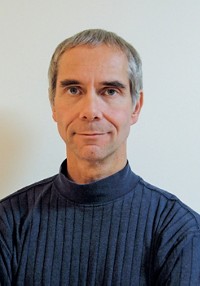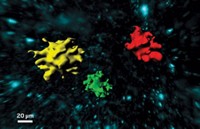Advertisement
Grab your lab coat. Let's get started
Welcome!
Welcome!
Create an account below to get 6 C&EN articles per month, receive newsletters and more - all free.
It seems this is your first time logging in online. Please enter the following information to continue.
As an ACS member you automatically get access to this site. All we need is few more details to create your reading experience.
Not you? Sign in with a different account.
Not you? Sign in with a different account.
ERROR 1
ERROR 1
ERROR 2
ERROR 2
ERROR 2
ERROR 2
ERROR 2
Password and Confirm password must match.
If you have an ACS member number, please enter it here so we can link this account to your membership. (optional)
ERROR 2
ACS values your privacy. By submitting your information, you are gaining access to C&EN and subscribing to our weekly newsletter. We use the information you provide to make your reading experience better, and we will never sell your data to third party members.
Awards
2018 class of MacArthur Fellows includes chemist, life scientists
Analytical chemist Livia S. Eberlin, biophysical engineer Clifford Brangwynne, and neuroscientist Doris Tsao are among the genius grant recipients this year
by Megha Satyanarayana
October 5, 2018
An analytical chemist who developed a cancer imaging tool, a biophysical engineer who studies how organelles without membranes work, and a neuroscientist who has determined which neurons are responsible for face recognition are among the 25 recipients of 2018 MacArthur Fellowships.
The awards, commonly called “genius grants,” are “intended to encourage people of outstanding talent to pursue their own creative, intellectual, and professional inclinations,” according to the John D. & Catherine T. MacArthur Foundation. Each fellow receives $625,000, paid over five years.

The analytical chemist, Livia S. Eberlin of the University of Texas, Austin, uses mass spectrometry to help oncologists distinguish between cancer cells and the normal tissue that often surrounds it. Her work has led to the MassSpec Pen, which surgeons can use when cutting out tumors. Because tumor cells have different molecular activity than non-cancerous cells, the mass spec signature of a tissue sample removed during surgery can tell surgeons when to stop cutting.
In a statement from the University of Texas, Eberlin says, “I feel extremely honored and humbled because this is a very special fellowship that recognizes people for their talent and creativity, not for a specific project or their past work. They trust your work has and will continue to impact society and I am so thankful for that.”

The biophysicist, Clifford Brangwynne of Princeton University, has determined that dynamic assemblies of proteins and nucleic acids work outside typical membranes in the cell through phase transitions that allow liquids, even at a microscopic level, to exist next to each other without mixing.

Doris Tsao of California Institute of Technology studies visual processing—how our brains process what we see. Using electrical probes and mathematical modeling, her team has learned how to predict how neurons will respond to variable facial features, and then, using only the neural signaling patterns triggered when a monkey sees a face, they can reconstruct the image of the face.
This year’s class of 25 fellows, which also includes a planetary scientist, a health economist, a pastor, and a poet, was announced Thursday.
CORRECTION:
This story was updated on Oct. 12, 2018, to correct the spelling of the John D. & Catherine T. MacArthur Foundation.




Join the conversation
Contact the reporter
Submit a Letter to the Editor for publication
Engage with us on Twitter